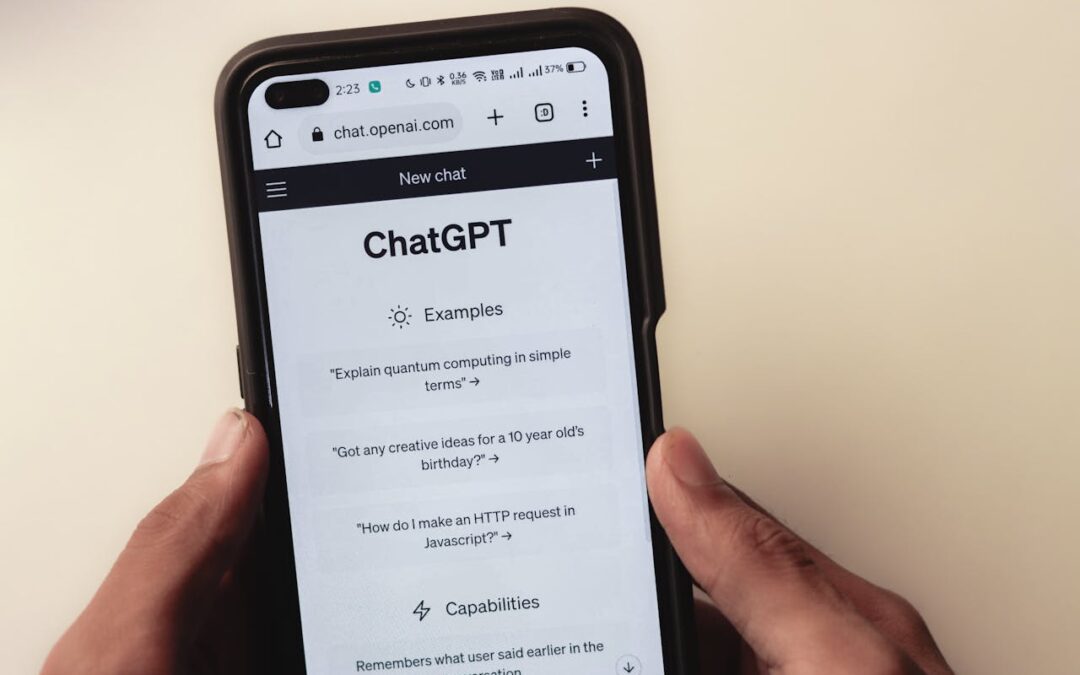With the rise in popularity of AI search such as ChatGPT, Perplexity and Gemini, it is important to look into how to optimise your content so that it gets featured in AI search results.
In this blog, we’re going to discuss what this means for future search optimisation and how to get your content to rank in these AI results.
What is Generative AI?
First, let’s briefly cover what generative AI is and how it works. Generative AI refers to AI algorithms that are capable of producing realistic and seemingly original content. Generative AI can be used to write news articles, blogs, stories and more. If you can imagine something, there’s a good chance an AI programme can help you create it.
There are many generative AI chatbot tools nowadays, but most of them fundamentally work in the same way. You give them a prompt, and then the algorithm will go to work, crawling the internet and generating a rich response incorporating the sources it finds.
Here are a few popular examples of generative AI chatbots:
What is Generative Engine Optimisation?
Generative Engine Optimisation (GEO) is the process of getting your content to rank in AI search results. This includes optimising content to feature in Google’s AI Overviews and getting your business/services referenced and recommended in generative AI chatbots.
GEO helps these generative models understand and highlight your content when creating their outputs. This differs from SEO, which focuses on ranking in the search engines.
GEO focuses on increasing the visibility of your website? within these generative responses as opposed to aiming for a higher rank on a search engine results page. It prioritises factors such as being concise, relevant, factual, accurate and high authority to rank and reference products, services and businesses.
How Generative Engines Work
When you type a prompt into generative engine chatbots, they start by breaking the prompt down into smaller, search-like queries and run those through its model. This includes its internal training data, and depending on the engine, external sources like the web.
The model then summarises each result and reassembles it into a response. Generative engines enable users to search with longer sentences, multiple trains of thought and even entire paragraphs. The models break down these inputs into parts that it can more easily process.
Why Does GEO Matter?
More people are beginning to use AI chatbots to search for information. Incorporating GEO into your strategy allows your business to improve its digital presence in a world where AI-driven searches are becoming more of the norm.
Let’s cover some core benefits of GEO for your business:
- Increased visibility
- Build brand trust and authority
- Stay ahead of your competition
How to Rank in AI Search
Many of the core principles that make successful SEO strategies are also important for GEO. Content is king. GEO, much like SEO, is all about providing useful content that your audiences are searching for.
Let’s cover five simple ways to improve your content for GEO:
1. Write Clear and Helpful Content
Just like SEO for Google algorithms, AI tools also look for content that answers questions well. Using simple language and clearly breaking down topics into clear steps will help the generative engines reference your content when answering related questions for users. Make sure you answer common questions that your audiences ask.
Proper usage of headings, bullet points and short paragraphs makes your content easy to scan. This is beneficial for both people and algorithms.
2. Use Natural Language and Real Questions
Think about how people type their searches into chatbots. Write content that includes real questions, such as “how do I…” or “what is…”. This also helps AI tools match your content with what users are asking
3. Show Expertise and Trust
AI models favour content from trusted sources that are viewed as having high authority on the subject matter.
Here is how you can increase the trust and authority of your content:
- Your content should be written or reviewed by experts
- It should link to reliable sources
- Include facts and examples
- Adding case studies, testimonials or accreditations
4. Use Structure Data and Technical SEO Basics
Remember, while GEO is about AI, good old reliable tech SEO still matters to ensure your site is easily crawlable for search engines.
Ensure you add:
- Meta titles and descriptions for all your pages
- Alt text and descriptions for all your images
- Relevant internal links between pages
- Schema markup (where possible)
Our Top Tip:
When internal linking, ensure the link is done naturally through the text and uses keyword-relevant anchor text to the page it is directed to.
Not only does this improve the user experience, but it also helps the search engines understand how your website content is connected.
5. Keep Your Content Fresh
Take time to go back through old blogs and service pages regularly. AI tools, much like Google, prefer current information. If your content is out of date, it may lose out to more current content.
This is also an opportunity to ensure that your older blogs have up-to-date internal linking to relevant new content you have released.
GEO Isn’t Replacing SEO – It’s Evolving It
As we may have mentioned once or twice, generative engine optimisation doesn’t replace SEO; it works with it. GEO, much like SEO, is all about preparing your content for humans (not AI or algorithms). The better tailored your content is for people and your target audiences, the more AI and Google algorithms will value it.
Need Help With GEO
At Flex Digital, we stay ahead of the marketing curve so you don’t have to. If you want to rank in AI search and get seen by the right audience, we can help.
From content writing to full SEO support, our expert team knows how to get results, now and in the future.
Get in touch today to future-proof your online presence.

